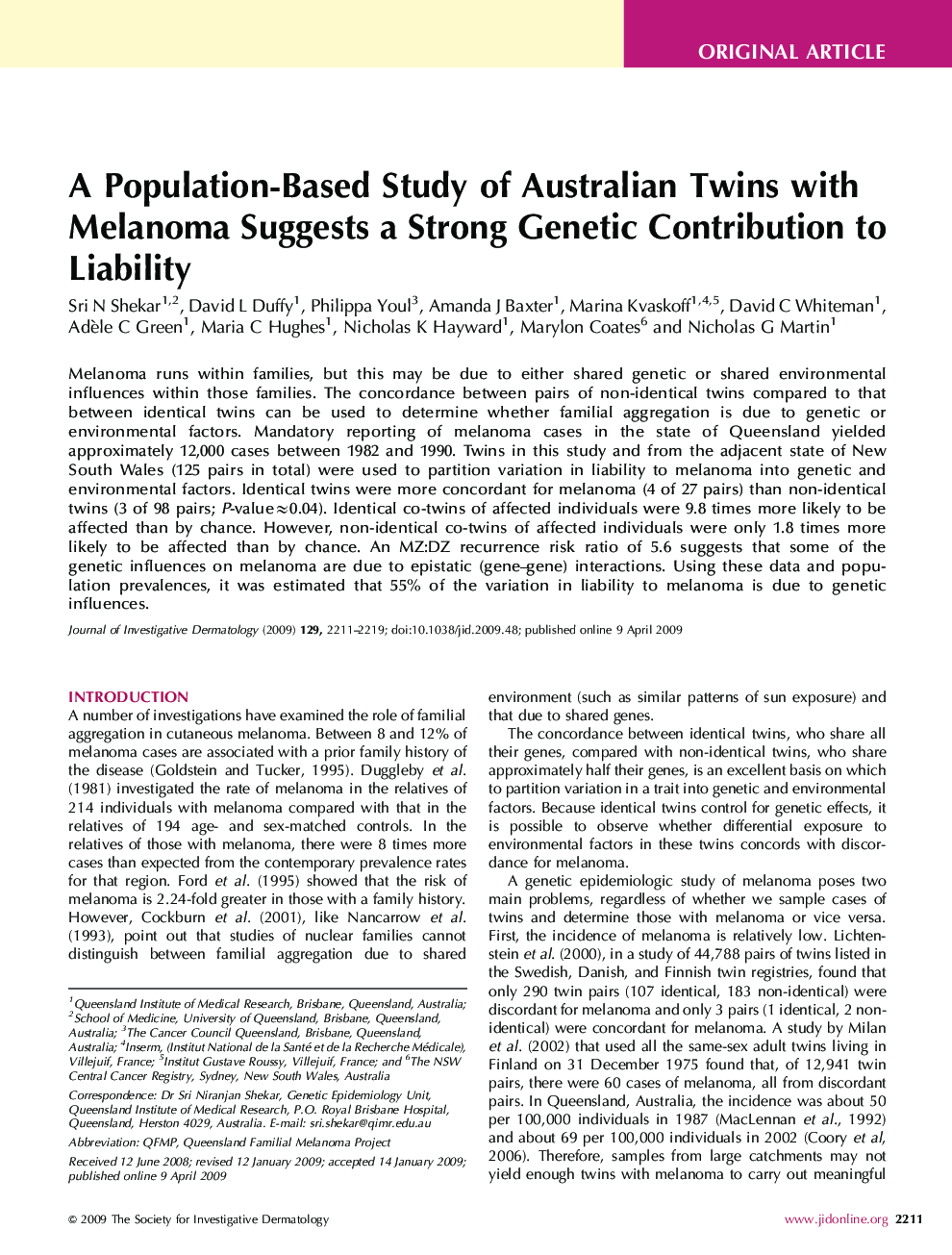| Article ID | Journal | Published Year | Pages | File Type |
|---|---|---|---|---|
| 3217601 | Journal of Investigative Dermatology | 2009 | 9 Pages |
Melanoma runs within families, but this may be due to either shared genetic or shared environmental influences within those families. The concordance between pairs of non-identical twins compared to that between identical twins can be used to determine whether familial aggregation is due to genetic or environmental factors. Mandatory reporting of melanoma cases in the state of Queensland yielded approximately 12,000 cases between 1982 and 1990. Twins in this study and from the adjacent state of New South Wales (125 pairs in total) were used to partition variation in liability to melanoma into genetic and environmental factors. Identical twins were more concordant for melanoma (4 of 27 pairs) than non-identical twins (3 of 98 pairs; P-value≈0.04). Identical co-twins of affected individuals were 9.8 times more likely to be affected than by chance. However, non-identical co-twins of affected individuals were only 1.8 times more likely to be affected than by chance. An MZ:DZ recurrence risk ratio of 5.6 suggests that some of the genetic influences on melanoma are due to epistatic (gene–gene) interactions. Using these data and population prevalences, it was estimated that 55% of the variation in liability to melanoma is due to genetic influences.
